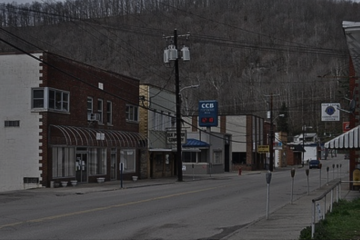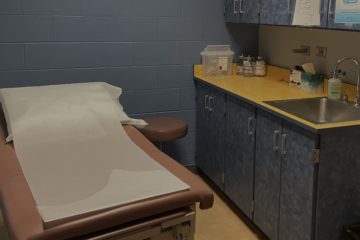Across the country and here at home, communities are planning to open schools for the fall semester. Here’s a pitch to them: bring your local health care providers to the table. Here’s why.
There has always been shared space between public school and health care, perhaps more than you think. Beyond physical education and health classes, school health staff do more than check for lice and pink eye. According to the West Virginia Department of Education, one in four students received medically-ordered care during the 2018-2019 school year. During the same year, over 17 percent of students qualified for special education services; many of them received health services as part of the Individualized Education Program/Plan.
This intersection between health care and schools serves a specific purpose—keeping kids healthy enough to participate in school during the school day.
 Now, we are in the middle of a pandemic with no end in sight. Kids can’t hide forever from COVID-19; in fact, they shouldn’t. Social interaction is critical to their development, as is their education. And so, the crux of opening schools lies in how healthy we can keep students, and how efficiently we can keep them from contracting the coronavirus. Schools are going to need outside help.
Now, we are in the middle of a pandemic with no end in sight. Kids can’t hide forever from COVID-19; in fact, they shouldn’t. Social interaction is critical to their development, as is their education. And so, the crux of opening schools lies in how healthy we can keep students, and how efficiently we can keep them from contracting the coronavirus. Schools are going to need outside help.
Health care is a continuum of services we receive in different settings. School health staff are incredibly valuable but limited in the scope of services that they can provide. Federal law requires certain services, and especially in West Virginia, these services keep school health staff increasingly busy. Their purview is narrow; their workloads are heavy.
One of the most important duties that a school health staffer does is identify when a student needs services beyond their scope. When this happens, they refer students to community health services, and often, this is where the ball gets dropped. Now more than ever, this step is critical. Say, for example, a child continues to show up to school with a fever. Will the school let them attend, or send them home? If the child has no access to health care, will they repeatedly miss school? Who will they test them for the coronavirus? Who will provide the follow-up care if they test positive?
West Virginia is fortunate to have one of the strongest networks of school-based health centers (SBHCs) in the country, but not every school has one, and not every SBHC has a referral policy with the schools they serve. Now’s the time to make sure there’s a bridge between systems, and this should be formalized in policy. While some children already have primary care providers, and none of this will be an issue, many kids don’t. They access health care like their parents do; they go when there’s an emergency. Right now, it’s to everyone’s benefit if kids access health care appropriately.
It’s also a great time to build these relationships because right now, health care providers need patients. Without them, providers are losing money and laying off workers. Rural West Virginia can’t afford to lose them. When we have moments when it’s safe to see the doctor, children should get up to date on their vaccinations and their annual well-child exams. Schools can create symbiotic relationships with community health providers that work to the benefit of both systems and the students.
And importantly, there’s this: Watching the country simultaneously face COVID-19 and protests over the death of George Floyd has, undoubtedly, been stressful for many children, especially for Black children. Now’s the time to bring community mental health providers to the table and discuss policies for referral paths to mental health care and what kids need to re-establish connections within their school community.
Building a better bridge between health care and education, at this moment, is critical. If schools don’t, they may wind up overtaxing their school health staff, expecting them to provide services beyond their scope, and in the meantime, further marginalizing children who do not have the means to navigate their own way to the health care system.
The first step is to bring health care to the planning table. The education system can focus on education; health care can focus on health care, and the school health staff can focus on the intersection between the two.
There’s nothing good about a pandemic, but something good can come of it. Communities can collaborate to create a culture of health, safety and shared responsibility for the students that they care for. The place to begin is now and at the same table.




0 Comments